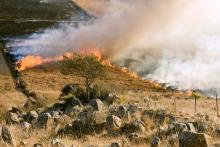Project EDWIN is UTOPIA's Solution to Wildfire Detection
UTOPIA Fiber, the publicly owned, open access network, has begun a pilot wildfire-detection project which has the potential to provide safer, faster, less expensive service to communities in Utah, saving the state tens of millions of dollars a year in firefighting and other economic costs. The EDWIN Project (Early Detection Wildfire Imaging Network), currently in beta testing, pairs advanced thermal imaging cameras with the fiber network’s infrastructure to help firefighters in the region detect events in real time. The pilot project — currently deployed to Woodland Hills (pop. 1,600), Murray (49,000), and Layton (77,000) — just launched, with plans to expand.
Standing Watch
The project’s focus right now is the Wasatch Front metropolitan area, where more than two million residents live. That’s 80% of the state’s population, and because the region is arid and hot in the summer it’s particularly vulnerable to wildfires.
The setup is simple: thermal cameras are placed at key geographic points in the region and connected to UTOPIA’s fiber network. The cameras, which look to be FLIR’s PT-series, scan the region continually and are used to provide real-time image processing at resolutions of up to 640x480 pixels. Should a reading hit 300 degrees Fahrenheit, a notification is sent to first responders, who can log into the camera’s perspective and confirm the presence of an out-of-control fire. They can then dispatch the appropriate units to the area.
“The EDWIN Project thermal imaging cameras are so advanced, they can detect a hot spot down to a pixel,” explained Roger Timmerman, executive director, UTOPIA Fiber.



